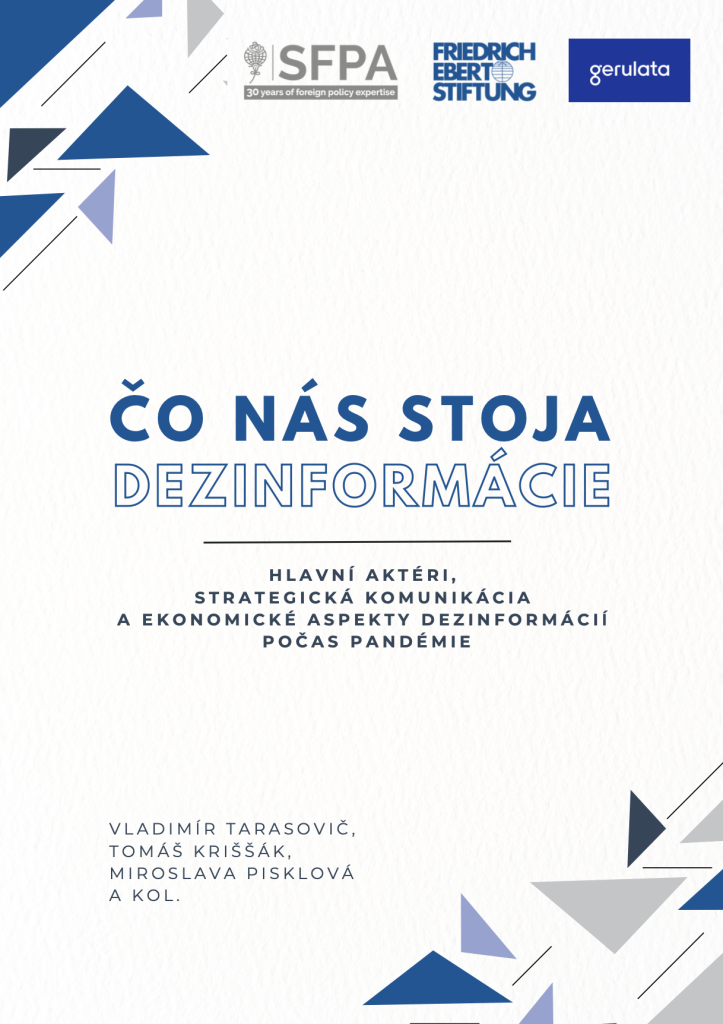What is the cost of disinformation? Main actors, strategic communication, and economic aspects of disinformation during the pandemics

The goal of the publication, in four chapters, is to present information from research aimed at informing both professionals and the general public about not only the impact of the COVID-19 pandemic but also misinformation and conspiracy narratives on the economy of Slovakia from 2020 to 2022. The publication does not debate whether vaccination is right or wrong; its aim is to demonstrate, through demonstrable examples, the financial impact misinformation can have on our wallets.
The COVID-19 pandemic has shown that misinformation spreading on social networks not only polarizes society and destabilizes the country but also causes real losses in lives, damages to health, and harm to the economy. Estimates suggest that Slovakia could have saved considerable costs if vaccination rates had reached the level recommended by the WHO, which is 70% of the population. Due to misinformation, Slovakia did not reach this threshold. A higher vaccination rate could have reduced the number of hospitalizations by more than 129,000 patients, leading to cost savings in hospitalization ranging from €2,404 to €60,498 per patient during periods of misinformation. Manipulations regarding anti-pandemic measures and resistance to them further deepened economic and social hardships, prolonging the necessity for these measures and worsening the social situation.
This publication is available only in the Slovak language.

